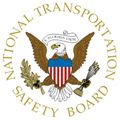 The emergency procedures provided to pilots for coping with turbocharger failures in flight are inadequate, the NTSB said this week, and the FAA should require manufacturers to revise pilot operating handbooks. In a fatal crash in May 2004, the NTSB says, the turbocharger failed on a Cessna T206H, and investigators found that in-flight emergency procedures in the POH did not provide a way to assess the difference between an engine and a turbocharger failure. The POH also did not provide any clear guidance about how to handle such a failure once a pilot identified the problem. Manufacturers of aircraft equipped with turbochargers still have not voluntarily improved emergency procedures for turbocharger failures, and accidents and incidents continue to occur, the NTSB says.
The emergency procedures provided to pilots for coping with turbocharger failures in flight are inadequate, the NTSB said this week, and the FAA should require manufacturers to revise pilot operating handbooks. In a fatal crash in May 2004, the NTSB says, the turbocharger failed on a Cessna T206H, and investigators found that in-flight emergency procedures in the POH did not provide a way to assess the difference between an engine and a turbocharger failure. The POH also did not provide any clear guidance about how to handle such a failure once a pilot identified the problem. Manufacturers of aircraft equipped with turbochargers still have not voluntarily improved emergency procedures for turbocharger failures, and accidents and incidents continue to occur, the NTSB says.
In the 2004 accident, a turbocharger-equipped Cessna T206H crashed in Illinois after the pilot reported a loss of engine power while at cruise flight at 1,150 feet AGL. Witnesses reported they heard several attempts to restart the engine and black smoke billowed from the aircraft during each attempt. The airplane struck trees as it descended and crashed into a garage. A fire and explosion ensued, and the pilot was fatally injured. The NTSB found that the turbocharger had failed and the turbine wheel seized. The board concluded that the probable cause of this accident was, in part, “the seized turbocharger…. [c]ontributing factors were the inadequate emergency procedures by the manufacturer.”


































